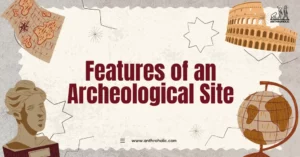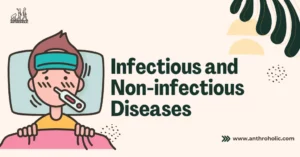AI Answer Evaluation Platform Live Now. Try Free Answer Evaluation Now
Unity and Diversity in India
India, often referred to as a subcontinent, presents a fascinating canvas of unity and diversity. Encompassing an array of cultures, languages, traditions, and religions, the nation stands as a testimony to cohesiveness amid differences [1].

Historical Perspective
Pre-Colonial Era
- Unity in Early Civilizations: The Indus Valley civilization and Vedic period laid the foundation of cultural unity through shared beliefs and social structures [2].
- Regional Kingdoms: Different kingdoms and empires flourished, reflecting the regional diversity but maintaining connections through trade and diplomacy [3].
Colonial Period
- British Rule and Unity: The British unified India administratively but also sowed seeds of division through policies like Divide and Rule [4].
- National Movement: The struggle for independence brought together various sections of the society, fostering a sense of national unity [5].
Linguistic Diversity
Languages and Dialects
- Main Languages: India is home to 22 officially recognized languages, each with its unique script and cultural heritage [6].
- Dialects: More than 1,600 dialects add to the rich linguistic diversity.
Table 1: Top 5 Languages in India by Number of Speakers
| Language | Number of Speakers |
|---|---|
| Hindi | 528 million |
| Bengali | 97 million |
| Telugu | 83 million |
| Marathi | 83 million |
| Tamil | 75 million |
These languages not only represent different linguistic families but also reflect the regional identities and cultural variations.
Religious Diversity
India is a secular state where multiple religions coexist, contributing to both unity and diversity.
Major Religions
- Hinduism: The majority of the population follows Hinduism, which has a profound influence on the Indian culture.
- Islam: With around 14% of the population, Islam has significant cultural contributions, particularly in art, architecture, and music.
- Christianity, Sikhism, Buddhism, and Jainism: These religions, though smaller in followers, have played vital roles in shaping the philosophical and ethical framework of the society.
Table 2: Major Religions in India by Percentage of Population
| Religion | Percentage |
|---|---|
| Hinduism | 79.8% |
| Islam | 14.2% |
| Christianity | 2.3% |
| Sikhism | 1.7% |
| Other | 2.0% |
These religious traditions interact, coalesce, and sometimes conflict, creating a complex tapestry of unity and diversity.
Cultural Diversity
Traditional Arts and Crafts
- Dance and Music: India boasts various classical dance and music forms, like Bharatanatyam, Kathakali, Hindustani, and Carnatic music, each originating from different regions.
- Craftsmanship: The array of traditional crafts such as pottery, weaving, and sculpting across states portrays the cultural richness.
Festivals
- Celebrations Across Religions: Festivals like Diwali, Eid, Christmas, and Baisakhi illustrate the amalgamation of different cultural practices.
- Regional Festivals: Pongal, Onam, and Bihu are examples of regional celebrations that define local customs and traditions.
Culinary Diversity
Regional Cuisines
- Northern Cuisine: Known for rich and heavy dishes.
- Southern Cuisine: Renowned for rice-based dishes and coconut flavors.
- Eastern and Western Cuisines: They have their unique flavors and specialties.
Social Unity and Challenges
Caste System
- Historical Roots: The caste system, although diminished, still influences social relations in parts of India.
- Contemporary Issues: Efforts to eradicate caste-based discrimination continue, with legislation and social initiatives in place.
Gender and Society
- Women’s Role: The role of women has evolved over time, but gender inequality persists in certain areas.
- Legislation and Progress: Various laws and policies are designed to promote gender equality and women’s empowerment.
Unity in Diversity: The Indian Ethos
Philosophical Underpinnings
- Vasudhaiva Kutumbakam: This ancient Sanskrit phrase meaning “the world is one family” encapsulates the Indian ethos of unity amid diversity.
- Constitutional Principles: The Indian Constitution promotes secularism, democracy, and pluralism, strengthening the unity in diversity.
Table 3: Constitutional Provisions Promoting Unity
| Article | Provision |
|---|---|
| Article 14 | Equality before the law |
| Article 15 | Prohibition of discrimination |
| Article 25-28 | Freedom of religion |
Conclusion
Unity and diversity in India are not just concepts but living realities. They have shaped the nation’s history and continue to define its social, cultural, and political landscape. While the richness of diversity is celebrated, the challenges to unity must also be acknowledged and addressed. The interplay between unity and diversity in India is a complex yet beautiful phenomenon, making it a unique and vibrant nation.
References
[1] Smith, B. L. (2001). The Cultural Wealth of Nations.
[2] Thapar, R. (2002). Early India: From the Origins to AD 1300.
[3] Chandra, B. (2008). History of Medieval India.
[4] Wolpert, S. (2006). Shameful Flight: The Last Years of the British Empire in India.
[5] Guha, R. (2007). India after Gandhi.
[6] Census of India (2011). Language Data.




